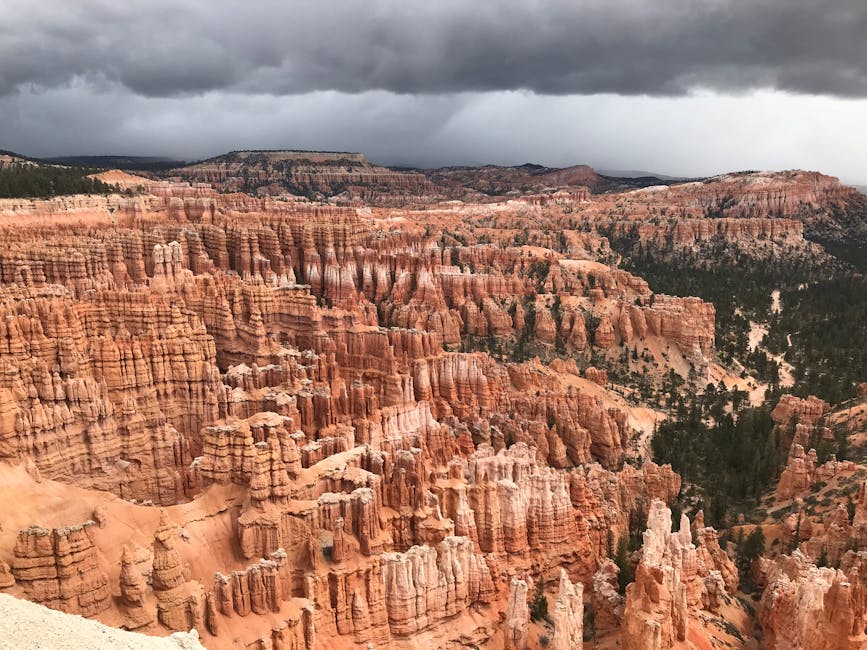In the hustle and bustle of modern life, the healing power of nature often goes unnoticed. Wilderness therapy, a therapeutic intervention that leverages the transformative potential of the great outdoors, offers a unique approach to personal growth and healing. This blog post delves into the benefits of wilderness therapy, exploring its principles, effectiveness, and potential applications.
Key Takeaways
- Wilderness therapy is a form of therapeutic intervention that uses nature as a tool for healing.
- It offers numerous psychological, physical, and social benefits.
- Wilderness therapy can be effective in treating a variety of mental health issues and behavioral challenges.
- There are different types of wilderness therapies, each with unique approaches and benefits.
- Despite its benefits, wilderness therapy may not be suitable for everyone and professional guidance is crucial.
Introduction to Wilderness Therapy
Definition and Overview
Wilderness therapy is a form of experiential therapy that takes place in outdoor settings, typically in the wilderness. It combines therapeutic counseling with challenging outdoor experiences to provide individuals with opportunities for personal growth, self-discovery, and emotional healing.
Historical Background
The roots of wilderness therapy can be traced back to the 1940s, when the Outward Bound program was established to teach survival skills to sailors during World War II. Over time, the therapeutic potential of such programs was recognized, leading to the development of wilderness therapy as a distinct therapeutic approach.
Relevance to Modern Therapy
In today’s fast-paced, technology-driven world, wilderness therapy offers a refreshing break from the norm. It provides a unique opportunity for individuals to disconnect from their daily stressors and reconnect with nature, promoting mental well-being and personal growth.

How Wilderness Therapy Works
Core Principles
Immersion in Nature
The first core principle of wilderness therapy is immersion in nature. By spending time in the wilderness, individuals are removed from their usual environments and distractions, allowing them to focus on their personal growth and healing.
Experiential Learning
The second principle is experiential learning. Wilderness therapy involves hands-on activities that challenge individuals physically, emotionally, and mentally. Through these experiences, individuals learn valuable life skills and gain insights into their behaviors and emotions.
Therapeutic Activities
Hiking and Backpacking
Hiking and backpacking are common activities in wilderness therapy. These activities not only promote physical fitness but also teach individuals about perseverance, problem-solving, and the value of hard work.
Survival Skills Training
Survival skills training is another key component of wilderness therapy. This can include learning how to build a fire, navigate using a compass, or set up a tent. These skills not only boost individuals’ self-confidence but also teach them about responsibility, resourcefulness, and resilience.
Role of Therapists in Wilderness Settings
In wilderness therapy, therapists play a crucial role. They provide guidance and support, facilitate therapeutic activities, and help individuals process their experiences and emotions in a constructive manner.

Benefits of Wilderness Therapy
Psychological Improvements
Enhanced Emotional Resilience
One of the key benefits of wilderness therapy is enhanced emotional resilience. By facing and overcoming challenges in the wilderness, individuals learn to cope with stress and adversity, which can boost their emotional resilience.
Reduction in Symptoms of Anxiety and Depression
Wilderness therapy can also help reduce symptoms of anxiety and depression. The calming effect of nature, combined with physical activity and therapeutic support, can help alleviate these symptoms and promote mental well-being. This aligns with the findings of numerous studies highlighting the psychological benefits of spending time in nature.
Physical Health Benefits
Increased Physical Fitness
Wilderness therapy involves various physical activities, which can help improve physical fitness. Regular physical activity is known to have numerous health benefits, including improved cardiovascular health, increased strength and flexibility, and better sleep.
Improved Sleep Patterns
Spending time outdoors can also help regulate sleep patterns. Exposure to natural light can help reset the body’s internal clock, promoting better sleep quality and duration.
Social and Interpersonal Skills Development
Teamwork and Communication
Many activities in wilderness therapy require teamwork and communication. Through these activities, individuals can improve their social skills, learn to work effectively in a team, and develop better communication skills.
Leadership Skills
Wilderness therapy can also help individuals develop leadership skills. By taking on responsibilities and making decisions, individuals can learn to lead effectively and gain confidence in their abilities.

Conditions Treated by Wilderness Therapy
Mental Health Issues
Depression
Wilderness therapy can be effective in treating depression. The combination of physical activity, therapeutic support, and the calming effect of nature can help alleviate depressive symptoms and promote mental well-being.
Anxiety Disorders
Wilderness therapy can also help individuals with anxiety disorders. By providing a safe and supportive environment, wilderness therapy can help individuals face their fears, manage their anxiety, and develop coping strategies.
Behavioral Challenges
Addiction Recovery
Wilderness therapy can be beneficial for individuals recovering from addiction. The structured environment, combined with therapeutic support, can help individuals develop healthy coping mechanisms, improve their self-esteem, and reduce their reliance on substances.
Conduct Disorders
Wilderness therapy can also be effective in treating conduct disorders. By providing a structured environment and positive role models, wilderness therapy can help individuals develop better behavioral patterns and improve their social skills.
Adaptability to Various Survivor Needs
Wilderness therapy can be adapted to meet the needs of various individuals. Whether it’s dealing with mental health issues, behavioral challenges, or simply seeking personal growth, wilderness therapy can provide a supportive and transformative environment.

Types of Wilderness Therapies
Adventure-Based Therapy
Adventure-based therapy is a type of wilderness therapy that involves challenging outdoor activities such as rock climbing, canoeing, or ropes courses. These activities can help individuals develop self-confidence, improve their problem-solving skills, and enhance their physical fitness.
Ecotherapy
Ecotherapy, also known as nature therapy, involves activities that connect individuals with nature. This can include gardening, wildlife observation, or simply spending time in natural settings. Ecotherapy can help reduce stress, improve mood, and promote a sense of well-being.
Animal-Assisted Therapy in Wilderness Settings
Animal-assisted therapy in wilderness settings involves interactions with animals such as horses, dogs, or birds. These interactions can provide comfort, reduce stress, and promote emotional healing.

Financial and Accessibility Considerations
Insurance Coverage and Limitations
While some insurance companies may cover wilderness therapy, coverage can vary widely. It’s important to check with your insurance provider to understand what is covered and what is not.
Cost-Effectiveness Compared to Traditional Therapy
Despite the potential costs, wilderness therapy can be cost-effective compared to traditional therapy. By providing a comprehensive approach to healing, wilderness therapy can help individuals make significant progress in a shorter period of time.
Limitations and Suitability
When Wilderness Therapy May Not Be Suitable
While wilderness therapy has many benefits, it may not be suitable for everyone. Individuals with certain psychological conditions or physical limitations may not be able to participate in wilderness therapy. It’s important to consult with a healthcare professional before starting any new therapy program.
Importance of Professional Guidance
Professional guidance is crucial in wilderness therapy. A trained therapist can provide the necessary support and guidance, ensuring that the therapy is safe, effective, and tailored to the individual’s needs.

Success Rates and Effectiveness
Research and Case Studies
Research and case studies have shown the effectiveness of wilderness therapy. Many individuals who participate in wilderness therapy report significant improvements in their mental health, behavior, and overall well-being. For more detailed information, you can refer to this source.
Comparative Success with Conventional Therapy Methods
Compared to conventional therapy methods, wilderness therapy can offer unique benefits. The immersive nature of wilderness therapy, combined with the therapeutic support, can provide a powerful and transformative healing experience.
Concluding Thoughts on Wilderness Therapy
Summary of Key Benefits
In summary, wilderness therapy offers numerous benefits. It can enhance emotional resilience, reduce symptoms of anxiety and depression, improve physical fitness and sleep patterns, and develop social and interpersonal skills. Moreover, it can be effective in treating a variety of mental health issues and behavioral challenges.
Final Recommendations for Potential Participants
For those considering wilderness therapy, it’s important to do your research and consult with a healthcare professional. While wilderness therapy can be a powerful tool for healing and personal growth, it’s important to ensure that it’s the right fit for you.
Personal Reflections and Broader Implications
Personal Experiences with Nature and Healing
Many of us can attest to the healing power of nature. Whether it’s the calming effect of a forest walk, the exhilaration of a mountain hike, or the simple joy of watching a sunset, nature has a way of soothing our minds and rejuvenating our spirits. This aligns with the principles of wilderness therapy, which leverages the healing power of nature to promote personal growth and healing.
Expanding the Scope of Wilderness Therapy in Recovery Programs
Given the benefits of wilderness therapy, there’s potential for its wider integration into recovery programs. By providing a holistic approach to healing, wilderness therapy can complement traditional therapy methods and provide individuals with additional tools for personal growth and recovery.
In conclusion, wilderness therapy offers a unique and powerful approach to healing. By harnessing the transformative power of nature, it provides individuals with the opportunity to grow, heal, and discover their true potential. Whether you’re dealing with mental health issues, seeking personal growth, or simply looking to reconnect with nature, wilderness therapy may be worth exploring.
Unlock Nature’s Healing: Your FAQ Guide to Exploring the Benefits of Wilderness Therapy
What is wilderness therapy?
Wilderness therapy is a form of experiential treatment that uses outdoor adventures and activities as therapeutic interventions. It’s designed to foster personal growth, self-discovery, and emotional healing by immersing participants in nature. This approach combines traditional counseling techniques with challenging outdoor experiences to help individuals, especially teens and young adults, overcome personal issues, mental health challenges, and behavioral problems.
Who can benefit from wilderness therapy?
Wilderness therapy is particularly beneficial for adolescents and young adults struggling with emotional, behavioral, or mental health issues. This includes, but is not limited to, depression, anxiety, substance abuse, ADHD, and oppositional defiant disorder. It’s also effective for those experiencing interpersonal problems, low self-esteem, or academic challenges. However, it’s important to consult with a professional to determine if wilderness therapy is suitable for your specific situation.
How does wilderness therapy differ from traditional therapy?
Unlike traditional therapy that takes place in an office setting, wilderness therapy occurs in natural, outdoor environments. This setting provides unique challenges and opportunities for growth that can’t be replicated indoors. Participants engage in activities like hiking, camping, and team-building exercises, which help develop resilience, self-reliance, and social skills. The immersive nature experience also promotes mindfulness and a deeper connection to oneself and the environment.
What are the key components of wilderness therapy?
Key components of wilderness therapy include immersion in nature, adventure-based activities, group living, individual and group therapy sessions, and a focus on self-sufficiency and personal responsibility. These elements work together to encourage self-reflection, improve social skills, and foster a sense of accomplishment. Therapists and guides support participants through these experiences, facilitating personal growth and healing.
Is wilderness therapy safe?
Yes, when conducted by reputable organizations with experienced, trained professionals, wilderness therapy is safe. These programs adhere to strict safety standards and protocols to manage risks associated with outdoor activities. Staff are typically trained in wilderness first aid, risk management, and therapeutic techniques to ensure a safe and supportive environment for all participants.
How long does a wilderness therapy program typically last?
The duration of wilderness therapy programs can vary, but most last between 30 to 90 days. The length of the program depends on the specific needs of the participant and the goals of therapy. Some individuals may benefit from shorter sessions, while others may require a longer stay to achieve lasting change.
What outcomes can be expected from wilderness therapy?
Participants in wilderness therapy can expect a range of positive outcomes, including improved mental health, increased self-esteem, better interpersonal skills, and enhanced coping strategies. Many also report a deeper connection with nature and a renewed sense of purpose. The specific outcomes depend on the individual’s goals and the extent of their engagement with the therapeutic process.
Can wilderness therapy be covered by insurance?
Coverage for wilderness therapy varies by insurance provider and policy. Some insurance plans may cover certain aspects of the program, such as therapeutic sessions, under mental health benefits. However, many insurers do not cover the cost of wilderness therapy, as it is often considered an alternative treatment. It’s important to check with your insurance provider for specific coverage details.



